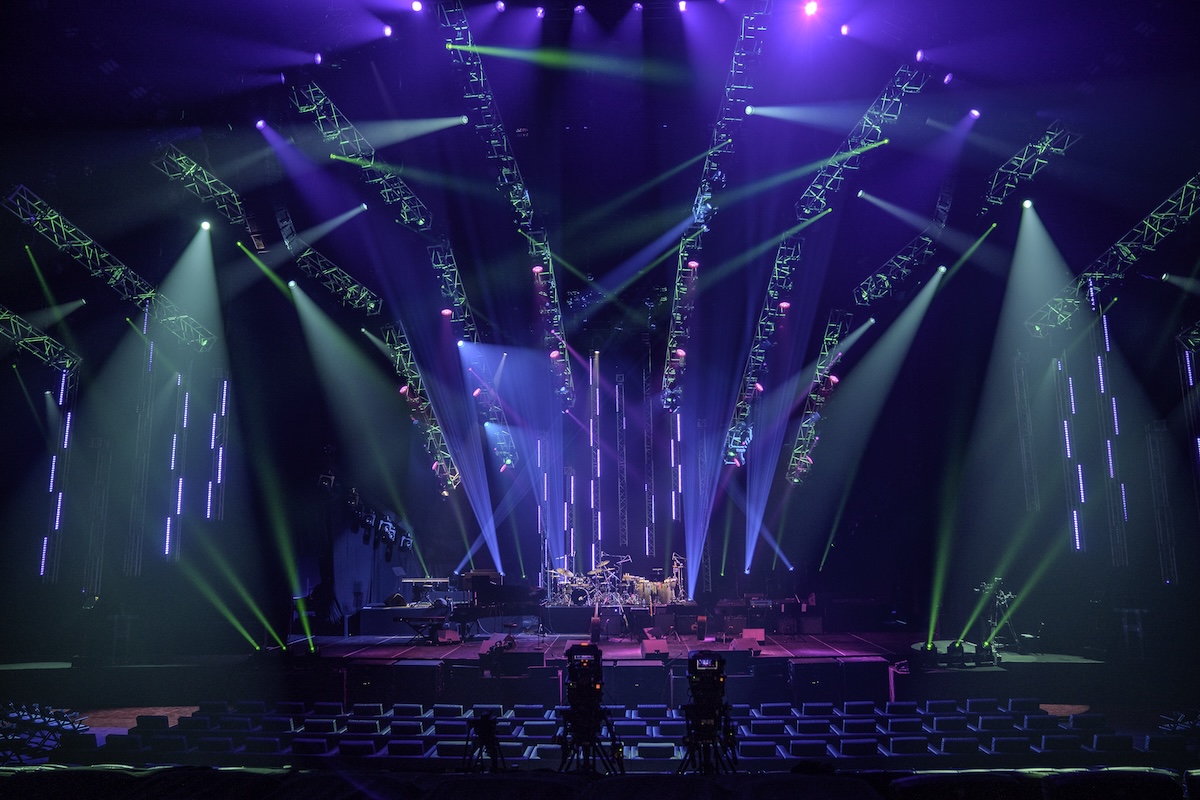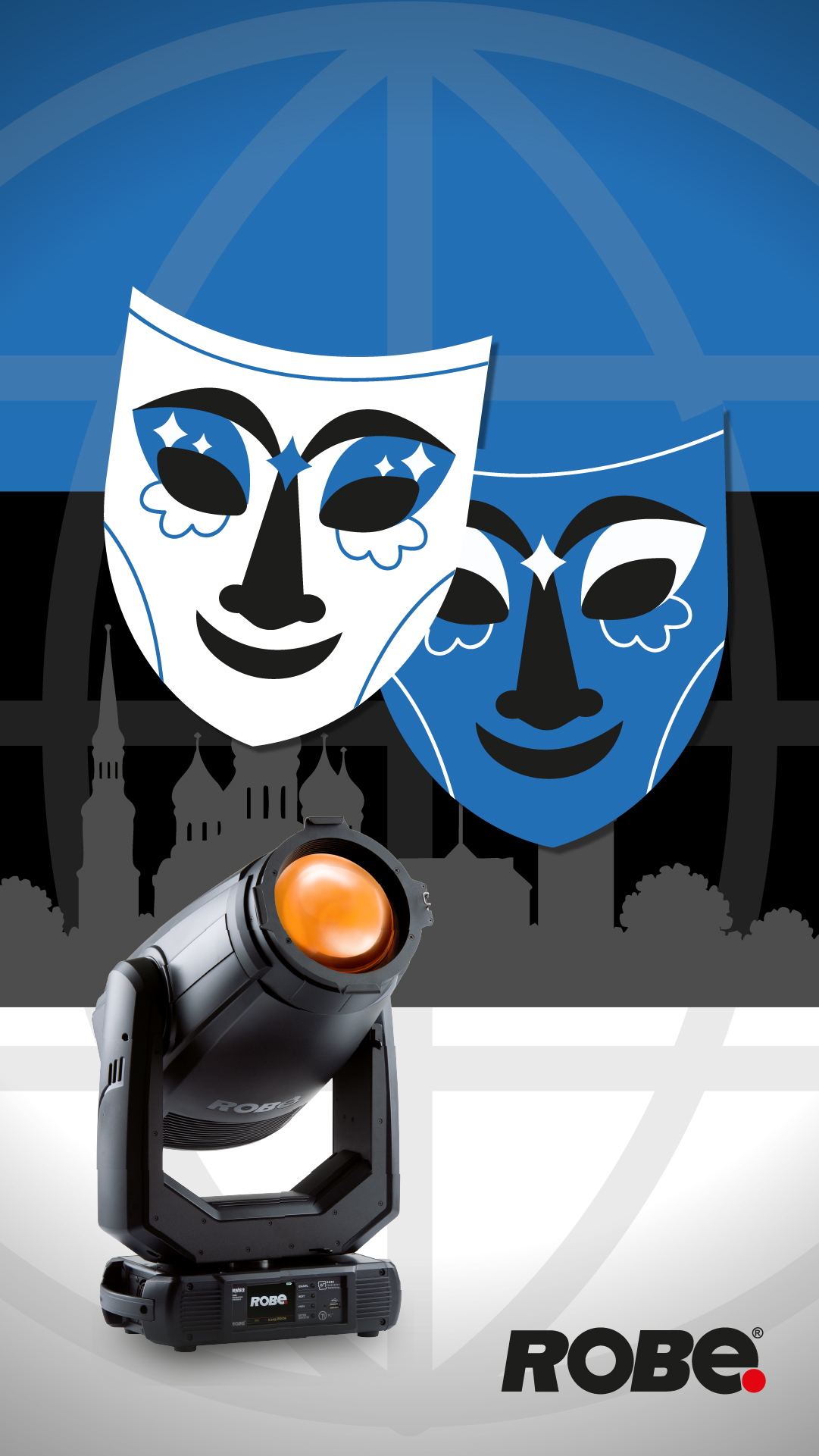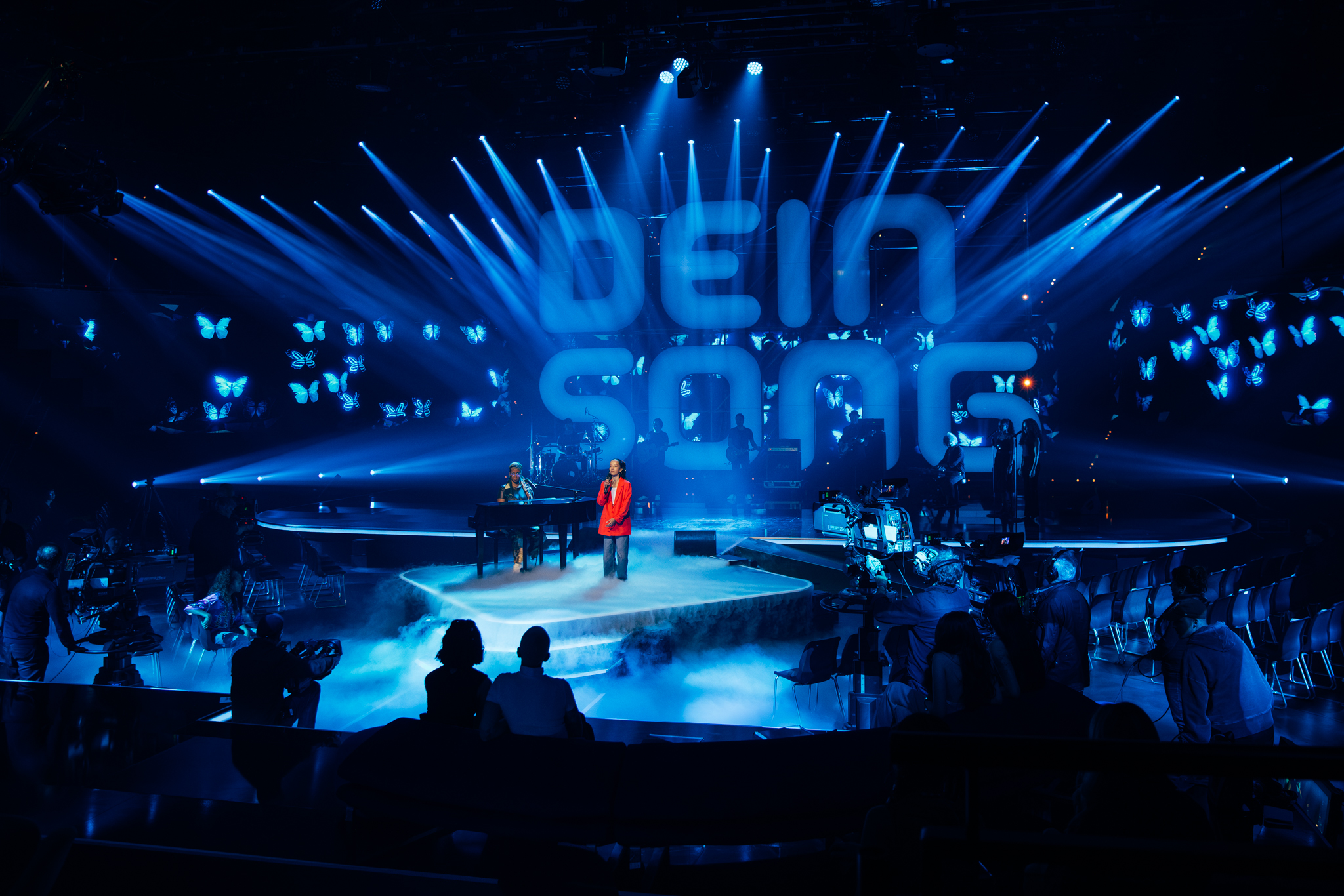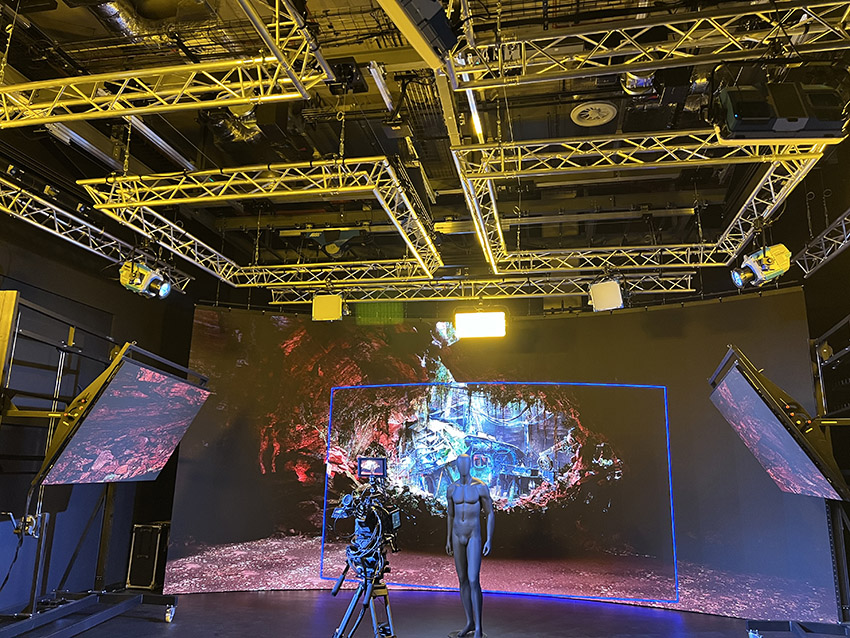DURBAN, South Africa – If South Africa's sizable population with Indian ancestry grappled with divided loyalties for a recent cricket match between the best players from both countries at Moses Mabhida Stadium, the quandary facing Gearhouse South Africa's Tim Dunn, who oversaw the stage, set and visual design for a televised concert during the event, was getting the whole project installed and ready in less than a week's time despite project-hampering rainstorms. The concert featured Shah Rukh Kahn and other top performers from India and South Africa, and the set design, ensconced in the bleachers at the south end of the stadium, sought to strike the right balance between classic Indian and South African design influences for the benefit of the 40,000 fans attending the match and millions more watching on TV.
The end result – a combination of metalwork, scenic texturing and LED screen surfaces complementing the stadium's iconic arch – had to maximize the available number of stadium seats, and be seen by people occupying those seats to the greatest degree possible via clear sightlines.
The set also had to withstand the vagaries of KwaZulu Natal rainy season, and the color of the stage and set cladding needed to contrast with the cricket ball so it could be clearly visible during the match.
Gearhouse SA's Rigging, Structures, Audio, Lighting and Media got involved in the project – as did sister companies SDS (set building) and LEDVision (LED screen), with more than 50 crew members from the company's Johannesburg, Durban and Cape Town branches convening on-site.
Michael Lewis and Eyal Yehezkely managed the project as a whole, and Gearhouse's Durban branch operations manager, Stuart Andrews, was integrally involved with the advance and on-site coordination. Advance work started on the project in September, ramping up steadily and then intensely as the show date approached – and as long periods of torrential rain set in.
Others central to the production loop were the show creative and artist liaison teams from Wizcraft and Cineyug, both based in Mumbai, who lined up the performers – also starring Anil Kapoor, Shahid Kapoor and Priyanka Chopra from India together with Locnville, Drum Cafe from South Africa for the three hours of live entertainment, which also included a speech by South African President, Jacob Zuma.

Structures, Set & Rigging
The first departments on site were Gearhouse Structures overseen by Attie van Staden and the team from SDS (Sets, Drapes, Screens) led by Pieter Joubert and André Matthysen who all collaborated closely to build the foundations.
A large scaffolding back wall was constructed to facilitate installation of the Calabash, a traditional African pot shaped trussing construction anchored to two nine-meter-diameter circles top and bottom with 16 curved eight-meter ribs, which crowned Dunn's stage set.
Ninety percent of the Calabash was built on the ground. This was then craned into place by a 60 metric ton crane that hoisted it atop the 20 meter high (from the ground at the front, 10 meters off the stepped bleacher deck behind) back wall. The final four ribs were added once it was in place.
The main scaffolding superstructure held other set elements and the PA wings. Flanking the Calabash, there were six variously sized minaret-style domes made from white fabric stretched over arched mini-trussing. These were rigged on platforms along the two side wings of the scaffolding structure at different elevations.
There was a large LED center screen onstage, with five chevron-shaped scenic LED columns on each side, with the lines of the LED bringing a dynamic contrast to the curves above.
SDS produced a series of gray corrugated PVC printed drops to fill in all the gaps, concealing all traces of scaffolding, and also with gray headers to cap the LED columns. Apart from the Calabash and the front legs of the ground support system, no raw metalwork was visible. The PA wings were finished in gauze scrims with the logo for Cricket South America (CSA).
The structure, fully loaded with all the technical equipment, weighed about 150 metric tons, requiring some careful loading calculations before receiving the green light from the stadium's structural engineers to build on the seating stands.
The stage measured 26 by 12 meters, with three shallow curved thrusts at the front, continuing the arc theme of the higher elements. The scaffolding superstructure was built by GH Structures, then clad and dressed in wood by SDS, and hand-painted in black with three white CSA logos on each thrust area, providing Branding for the overhead camera shots. Twenty-five translucent oval Zulu-style "shields" were also attached to the front of the stage apron and backlit.
The GH Rigging department, led by Roy Wood from the Durban office, worked with gear supplied from Johannesburg. Between rainstorms, they flew and anchored show elements in place, including the main screen, which was placed upon the deck using seven 2-metric ton motors that were then removed, leaving the LEDVision crew to install the last two rows of paneling by hand, because the full height of the screen could not be flown due to height restrictions.
The crew also built an eight-leg ground support system onstage, covering the upstage two thirds of the performance space to give rear, side and mid-stage lighting positions. A sub hung mid truss flown off this had to be lowered during the match allowing a clear trajectory for three camera positions which were specially created by Dunn on the top deck, just in front of the Calabash.
The PA stayed hanging for the show, and the side fills were sub hung from the ground support system.

Lighting
With the front legs of the ground support system about 3 meters upstage of the edge of the central thrust, the only downstage lighting positions were 12 followspots – six per side on two platforms (six Gladiators and six Supertroupers) – at 90 degrees to the stage. This presented a challenge because some of the acts featured large dance contingents, so Dunn compensated with an ample array of options for back, side and mid-stage set and scenic lighting fixtures.
Crowning the top circle of the Calabash were 10 Robe ColorSpot 2500E ATs, ideal for aerial effects. The ribs were all toned by an LED PAR top and bottom, and on the 10 front facing ribs there were 12 i-Pix Satellites for "sparkling" chases. In the center of the top deck of the Calabash, seven Panther 5K Xenon searchlights were used for bright aerial and back beam effects into the night sky.
Lining the front edge of the structure's top deck, there were eight Robe ColorSpot 2500E ATs and six Robe REDWash 3-192s. The minarets were internally lit using 12 i-Pix BB4s on each side.
The ground support onstage had a width of 30 meters with two levels of trim at 9 and 10 meters, diagonally slung truss upstage and the mid truss that was moved in during the match for the three cameras. On the ground support were another 20 REDWashes, six Robe ColorSpot 2500s and 24 ColorWash 2500s. These were all used for front and back stage washing, upstage key lighting and beamy looks.
Forty-eight 2-cell Moles enhanced the definition and geometry of the front legs and forward trusses of the ground support.
At floor level, under the side screen columns and PA wings, the crew used 24 Robe ROBIN 300 Spots, 12 on each side, together with 4 ROBIN 300 Washes per side shooting up the scrims and illuminating the logo.
Sixteen ROBIN 300 Washes were positioned along the sides of the stage in the "shin buster" position, used for cross stage and low level modeling for the dancers. Dunn chose Robe moving lights in part due to their reliability in adverse weather conditions.
On the sides of the stage at floor level, radiating out around the field of play, were 16 Panther 5Ks, used for aerial effects across the front section of the field, working with the floor lighting on the stage. The crew also rigged 36 Panther 2K Xenons all around the front wall of the highest level of bleacher seating via custom brackets.
The 25 shields along the front of the stage were each up-lit with a BB4 unit.
Dunn programmed and ran the show on a grandMA full size console, with Hugh Turner calling followspots.

Video
A second grandMA full size at front of house was used by Gearhouse Media's Marcel Wijnberger, driving three MA VPUs that sent custom created ambient content, plus that supplied by some artists, to the onstage LED screens.
A full Barco Encore screen management system, operated by Luigi Cosani, handled video distribution to all the LED surfaces, which were comprised from 224 panels of Lighthouse R16, configured as a single image to run across all 3 processors.
Cosani also received a TX feed from the Supersport HD OB truck, which was output to two 16-by-9-foot side screens on both sides of the stage at the back of the second level seating. Each screen was lit by a Christie 18K projector.
Wijnberger also designed and installed the fiber optic system running data for lighting and video from the stage, 280 meters to the front of house position. Two lines (master and backup) were run via two MA NPUs backstage at the dimmer position.
For more information, please visit www.gearhouse.co.za.




